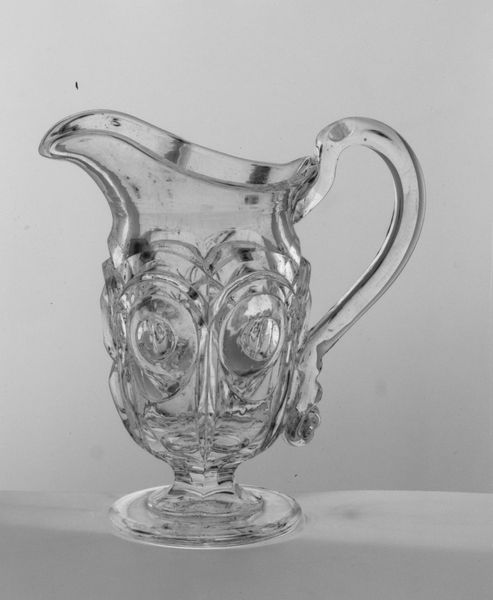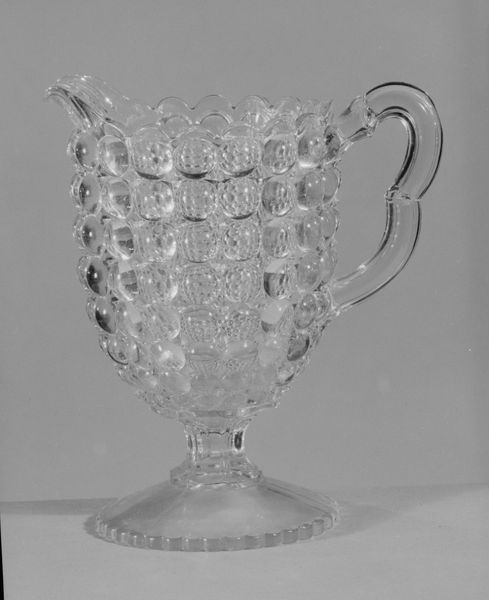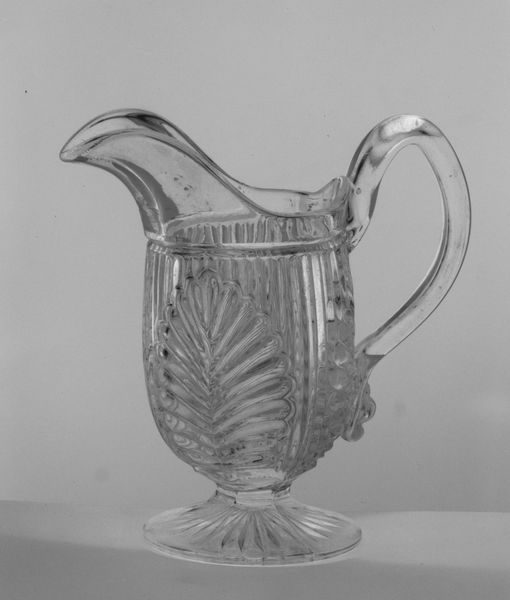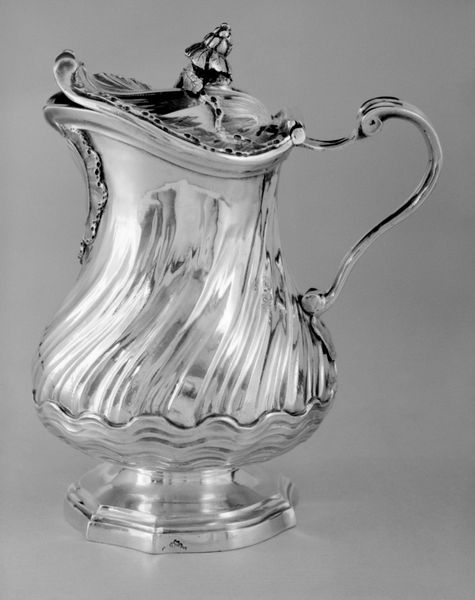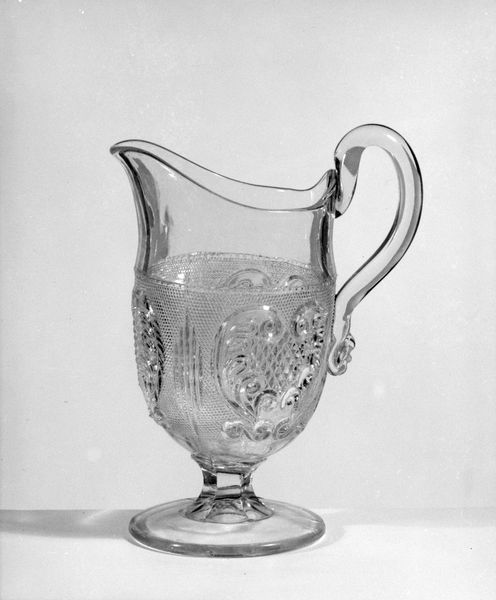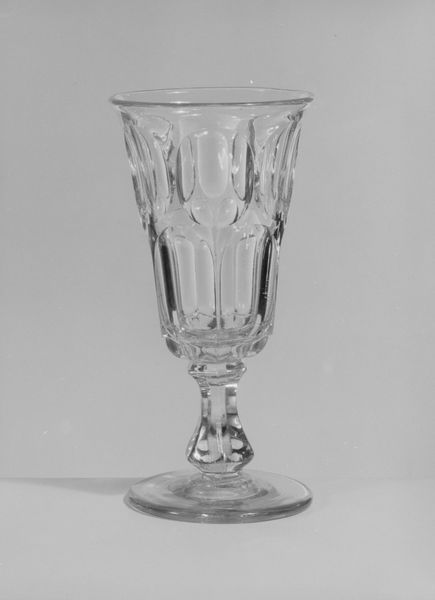
glass
#
glass
#
united-states
#
decorative-art
Dimensions: H. 7 in. (17.8 cm)
Copyright: Public Domain
Editor: This is a glass Creamer made by the Portland Glass Company, dating somewhere between 1865 and 1874. I find its ornate design, especially the grapevine etching, quite elegant. How would you interpret this work? Curator: It's beautiful, isn’t it? Beyond the craftsmanship, I consider this creamer as a marker of the Victorian era's complex social landscape. Think about who would have used this: most likely middle to upper-class white families, aspiring to ideals of refinement and domesticity even amidst post-Civil War reconstruction, wouldn’t you agree? Editor: That's a great point. The refined design certainly speaks to a certain class and lifestyle. It's a far cry from the realities many Americans were facing. Curator: Precisely! Even the grapevine motif subtly points to themes of abundance and cultivation, intentionally mirroring American ideals, while side-stepping topics of industrialization, immigration, race, class…The everyday objects often mask entire portions of our history and culture. What else stands out for you? Editor: I notice the geometric cuts juxtaposed with the organic, flowing lines of the handle and the etching. There is a lot going on in such a simple object. Curator: Absolutely. These items of domestic décor become incredibly charged spaces when we see them this way. What’s important is this object asks more than answers. Next time you see an object like this, think, who owned it, where, and when, and you may find it has something to say. Editor: I see what you mean; I learned to consider how this cream pitcher reflects and shapes the domestic ideals of its time, hiding a very clear message. Curator: Yes, let's be critical when considering its function. The cream isn’t just a commodity, it has social dimensions tied to consumption and domestic ritual, even when contained by such elegance!
Comments
No comments
Be the first to comment and join the conversation on the ultimate creative platform.
